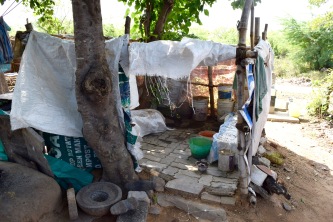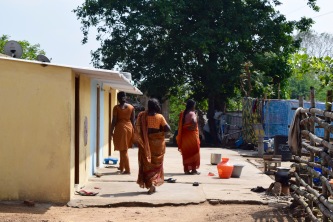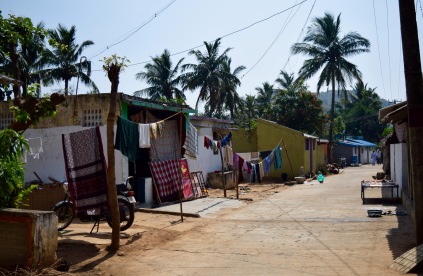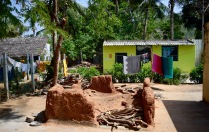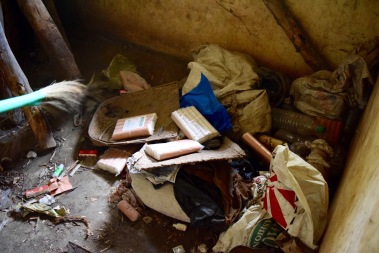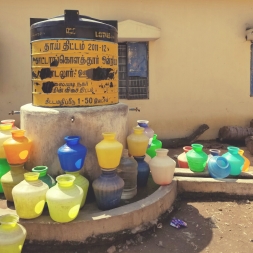- Monday, February 27, 2017
- 0 Comments
We are excited to repost a recent blog entry from Julia Sawatzky. Julia is currently in the midst of an incredible adventure. She is five months into a year-long expedition, exploring and serving in various cities across Asia and Africa before she begins a Medical Doctorate degree at the University of Alberta.
As a 2016 R&A International Scholar, her project embodies three themes: an exploration of public health in practice, global health, and the link between culture and the arts and the practice of medicine.
We were so fortunate to have Julia visit our programs in India for two weeks earlier this month. We loved this post and her ability to adeptly and succinctly describe the complex issues facing the leprosy affected throughout India.
As a 2016 R&A International Scholar, her project embodies three themes: an exploration of public health in practice, global health, and the link between culture and the arts and the practice of medicine.
We were so fortunate to have Julia visit our programs in India for two weeks earlier this month. We loved this post and her ability to adeptly and succinctly describe the complex issues facing the leprosy affected throughout India.
__________________________________________________________________
In my last post, I shared a selection of the thousands of photos I took during my colourful, cultural descent from northern India’s chilly temperatures to the hot, humid, tropical south. Now it’s time to write about where I was going, and why.
I came to India to volunteer in Chennai with Rising Star Outreach, an NGO that aims to “lift those with leprosy” through the long-term provision of medical care, academic education and community initiatives designed to break the cycle of poverty leprosy sufferers face.
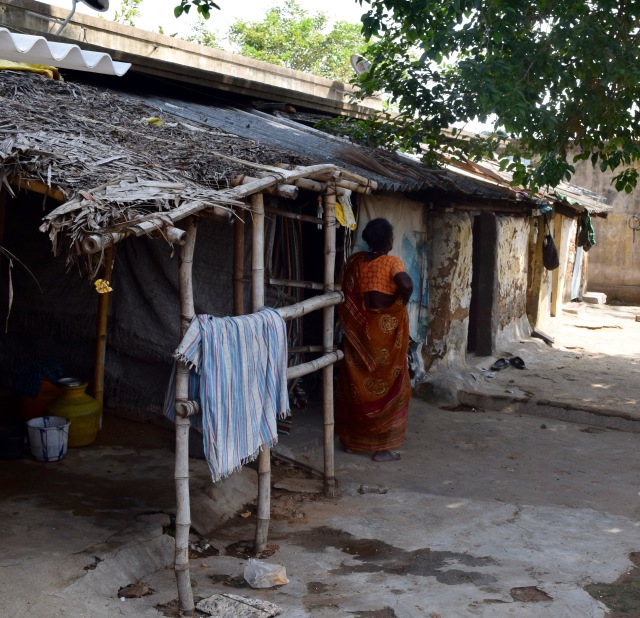
I had many reasons to be interested in leprosy. It is an infectious disease, so public health approaches to breaking chains of infection in communities – a key interest of mine – is vital. The disease has inspired deeply-routed social stigmas in Indian society, meaning it exists at a crucial crossroads between science and culture: a realm I was extremely keen to explore on this scholarship year. I can, and will, go on about the factors about leprosy that caught my attention and inspired my trip to India. But what truly boggled my mind about the disease and, I think, needs to be said first is that – despite the fact that 59% of the 225,000 new leprosy cases identified in 2015 occurred in India – India declared the disease “eliminated” TWELVE YEARS AGO, in 2005. WAIT, WHAT?!?
I’ll explain. The WHO set the definition of “elimination” as a country having fewer than 1 case in 10,000 population. In 2005, India did in fact meet this aim. The problem with this announcement, though, is the false sense of relief it provided the local and global medical community. Government funding for leprosy-specific prevention and treatment programs was rerouted into the general healthcare system in India. International aid and NGOs withdrew, and multiple NGOs closed their doors entirely. What these actors in the leprosy scene missed, however, was the reality that with a population like India’s – 1.2 BILLION people – a prevalence of 1 in 10,000 still leaves you with a LOT of people affected and suffering. Not ideal.
Biology Lesson: Quick Facts on Leprosy:
- Leprosy is a chronic disease caused by a bacillus, Mycobacterium leprae.
- M. leprae multiplies slowly and the incubation period of the disease is about 5 years. Symptoms can take as long as 20 years to appear.
- The disease mainly affects the skin, the peripheral nerves, mucosa of the upper respiratory tract, and also the eyes.
- Leprosy is curable with multidrug therapy (MDT). MDT has been made available for FREE from the World Health Organization since 1995.
- Although not highly infectious, leprosy is transmitted via droplets from the nose and mouth, during close and frequent contacts with untreated cases.
- Untreated, leprosy can cause progressive and permanent damage to the skin, nerves, limbs and eyes.
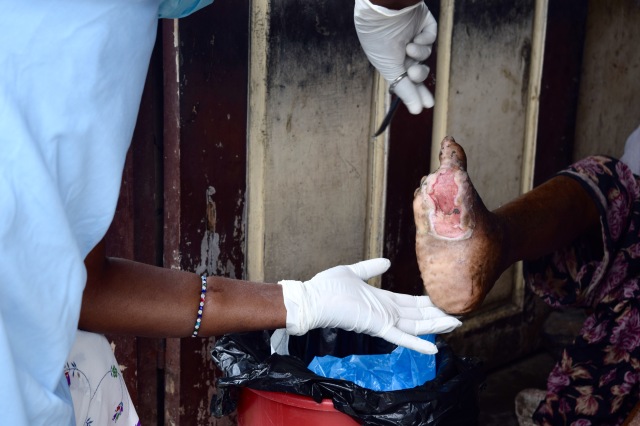
So, if leprosy is not highly infectious and treatable with highly-effective, FREE treatment – why is not actually eliminated, and in fact, a growing problem??

According to Dr. Susan Hilton, the medical director at Rising Star Outreach and an incredible inspiration to me, there are several reasons for this. Firstly, there is no vaccine, and no simple, sensitive and specific diagnostic test for leprosy. Diagnosis is mostly symptomatic and prevention requires society-wide efforts for treatment, hygiene and sanitation, instead of a “one-stop-shop”vaccination approach. This may change sooner rather than later though – READ THIS recent BBC article about a vaccination that is currently under development!!
Secondly, there is ignorance. Many people in India don’t know how to recognize the early signs of the disease and, as it develops slowly, don’t seek healthcare assistance for a long time. Then, they are unlikely to adhere to treatment (which takes 6-12 months to complete) because early symptoms are not particularly disfiguring or debilitating.

Finally, and most significantly, there is the stigma. Which breaks my heart. To bits and pieces. Once (and still, in many parts of India) believed to be a curse and a result of past wrongs, a leprosy diagnosis relegates a person to the lowest rung of the lowest caste in India’s Caste System. The leprosy affected have been, and are still, forced by the fear and hostility of their neighbours to leave their communities and live as outcasts: shunned in colonies away from cities, society, and educational/job opportunities.
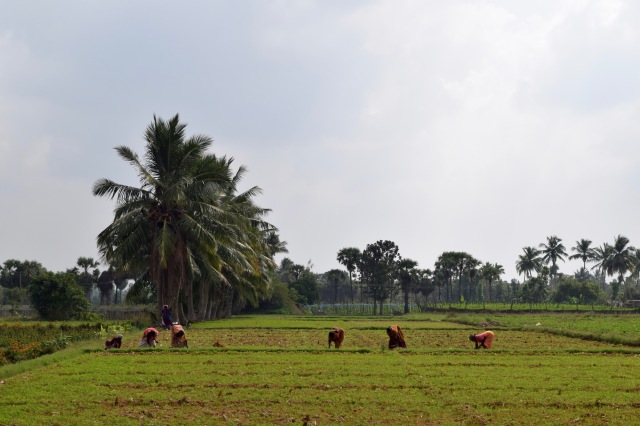
This stigma is even reflected in the law, mostly left over from British colonial leadership. In many states, the leprosy affected are banned from getting drivers licences and other official documents. A leprosy diagnosis for one’s partner is a legal grounds for divorce, and it is legal to offload a person affected with leprosy from public transport. The lerposy affected (even post-cure) cannot run for election in local office, and their children and even grandchildren can be denied entrance to government schools.
The leprosy colonies are remote, with almost no routine access to public or private healthcare. They often receive the last dredges of government supplied well water at irregular times, or some days not at all. Often physically disabled and unable to receive education or job training, many of the leprosy affected and their families resort to begging. The resulting poverty and overcrowding of the socially-neglected colonies propagates the whole cycle by allowing the low-grade infectious disease to spread. The stigma is very much encouraged by the visible and disfiguring physical deformities leprosy causes, so the affected are often too embarrassed to seek healthcare for fear of the social and cultural consequences. And, if symptoms have progressed to the point of irreversible deformities, even curative treatment will not lift the stigma and visible evidence of the ‘curse.’
So, India’s leprosy problem demonstrates that: you can have a cure. You can have FREE, accessible, effective treatment for a disease, and it can still be a WHOPPING public health problem that affects not only people’s medical health, but their all-round well-being and social productivity. Why? Because pills treat diseases. Pills don’t treat centuries-old beliefs held firmly by society, stitched securely into cultural and legal norms, and tangibly impacting and shaping the everyday lives of affected people and their families. Pills barely scrape the surface of the leprosy problem in India – but Rising Star’s community-based approaches do, by tackling the issue from broader, social angles and facing the stigma head on. After all of this scientific/academic jargon, there will be more on my role and experiences as a volunteer with RSO in the next post!
**Further interesting reading on leprosy for my fellow nerds:
- Wednesday, February 22, 2017
- 0 Comments
Written by:
Carrie Scott
Development Director
Gravel crunched under the wheels of my silver Nissan as they rolled to a stop in front of the Cashman Center Theatre on Las Vegas Boulevard, grateful for a rest after their long journey from Provo, Utah. There were still several hours before the curtain would whisk open and begin that evening’s Dancers Making a Difference event benefitting Rising Star Outreach. With arms laden with banners, flyers, and other display items, I inched past the security guard and into the spacious lobby to assess the scene.
Little girls in bright red lipstick and sparkly eyeshadow darted around lithe teenagers practicing rond de jambes and pique turns. A dance father on his cell phone was emphatically stating, “They said her hair needed to be in a high, tight ponytail!” and a dance mother was gripping several costumes with one hand while rummaging in her purse for her daughter’s apple with the other.
I dumped my collection on a waiting table and looked for the mastermind of the evening’s proceedings, a woman named Kathy Bunker. I’d never met Kathy but I had heard much about her - all of it glowing. Kathy is the owner of Bunker Dance Center, “a world class, award winning axis for dance where unrivaled faculty inspire and motivate dancers of all ages.” Kathy has been directing/hosting Dancers Making a Difference for several years and has been instrumental in her teams raising tens of thousands of needed dollars to help the leprosy affected in India.
I was smoothing an indigo sari across a long banquet table when Kathy walked through the door with Rising Star’s founder, Becky Douglas. The glowing reports I had heard about Kathy matched her countenance, which also radiated energy and warmth. Her blond hair was pulled back (though not in a high, tight ponytail) and her smile beamed a greeting.
In years past, Bunker Dance Center partnered with others to put on the event, but this year Kathy’s studio supplied the entire program, involving all of the dance troupes. As the crowd began to file in, supportive family and friends explored the Rising Star table and I had a chance to explain about leprosy, micro businesses, the Sponsor a Child program, and more. They were all receptive and supportive.
If you have ever heard Becky Douglas speak about the work of Rising Star, you know that she is spellbinding. This evening was no exception. As she related her story, the beautiful sari in which she was draped was the only clue that might give away the fact that she had just flown in from several weeks of hard work in India.
And then the dancing began.
From members of the youngest beginning teams to the technically advanced older teams, each dancer delivered an impressive performance. The costumes, lighting, and choreography complimented well-chosen music and the flow of the program kept the audience engaged from the first number to the last. It was humbling to think about the number of people that had to come together to pull off such a beautiful evening - from the choreographers and dancers to the supportive families to the lighting and sound crews to the stage managers and promoters and security guards and beyond. It was inspiring to see a community come together through a shared passion to benefit strangers on the other side of the world.
After the show, I was able to meet Kenady Bunker, Kathy’s beautiful daughter who also teaches and choreographs at the studio. Kenady thumbed through the pictures of children displayed on the table, marveling at how they had grown since she spent time in India volunteering for Rising Star. Additionally, I was pleased to see Steele and Sarah Hendershot, who also lived and volunteered with their children in India. Steele later served as the executive director of Rising Star in the United States. One of my favorite parts about working for Rising Star are the many wonderful people connected to the cause.
The evening was a stunning success, thanks to the hard work of everyone involved and their humanitarian hearts. We are grateful to those who attended, who sponsored children, who donated, and who made the fantastic performance possible. After raising over $9,000 and connecting nine children to new sponsors, these dancers, along with their community of support, have truly made a difference.
- Monday, February 13, 2017
- 0 Comments


